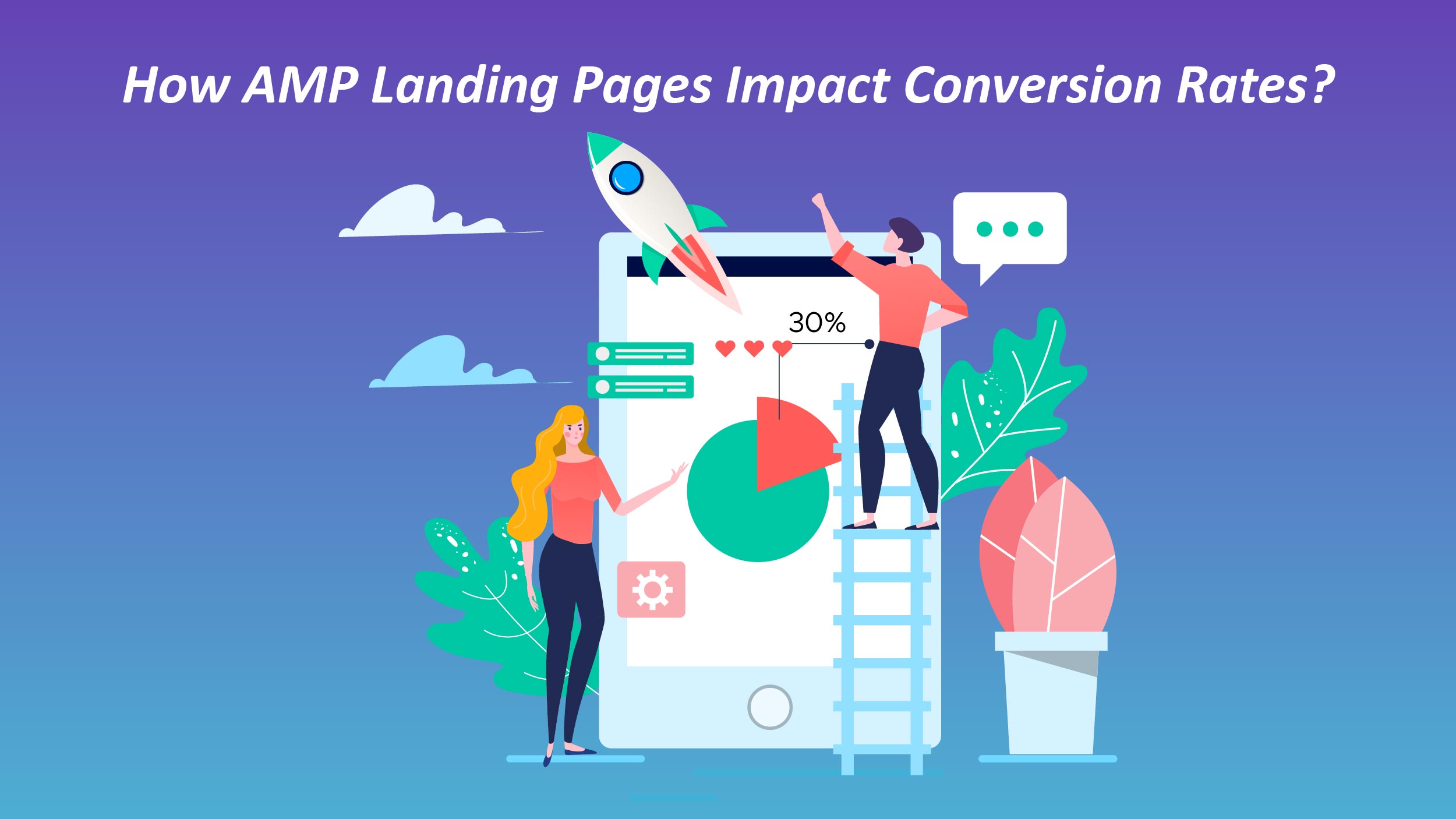In an era where mobile devices dominate internet usage, businesses are pondering the adoption of Accelerated Mobile Pages (AMP) as their mobile landing pages. The growing influence of AMP on internet usage, particularly in sectors like news, media, and online shopping, is undeniable. Despite this surge in popularity, many businesses remain cautious about embracing this change. The question arises: does your website need AMP landing pages?
To assess whether investing effort in an AMP landing page is worthwhile for enhancing conversion rates, we will delve into the considerations involved, the impact on businesses, and weigh the pros and cons associated with their implementation.
What is AMP Landing Pages?
Accelerated Mobile Pages, commonly referred to as AMP landing pages, are specifically crafted web pages aimed at delivering a swift and optimized browsing encounter for mobile users. Google‘s open-source framework, AMP, is instrumental in the development of these pages, striving to enhance the performance and speed of mobile web pages.
The principal objective of these landing pages is to elevate the overall mobile user experience by diminishing page load times and refining responsiveness. These pages are constructed using a streamlined version of HTML, CSS, and JavaScript, placing a premium on speed and efficiency.
The expeditious load times achieved by AMP landing pages result from the implementation of various techniques, including pre-rendering content, employing lazy loading for images, and minimizing reliance on external resources. These strategic optimizations ensure that users can swiftly access the desired content, fostering an improved user experience and increased engagement.
As per a study, 1 out of 4 visitors will leave your website if it takes more than 4 seconds to load. Whereas, 46% of users do not revisit poorly performing websites which can affect the success of that brand especially for E-commerce websites and businesses. So, businesses need to have these landing pages to be in the leading position in search engines to get maximum traffic.
Such pages are streamlined better and AMP HTML also helps developers to avoid common coding issues that lead to slow page loads. This makes browsers load mobile pages easier and faster. Also, AMP pages can be served directly from Google AMP Cache, where Google will choose to serve the cached copy of the original landing page, which offers the fastest loading.
How AMP Landing Pages Impact Conversion Rates?

Conversion rate refers to the percentage of users who have completed a desired action such as visiting a website by clicking on an advertisement or completing a survey. It is calculated by using two types of data insights i.e. the total number of users and many converted users. Dividing the number of converted users by the overall audience and converting the result into percentages gives a conversion rate.
With the help of AMP landing pages, a website can have faster loading times which leads to more viewers engaged with content and are more likely to go forward with the next step. The next step could be installing an application or just hitting checkout for purchase and such pages will also be linked with AMP and work faster to provide improved conversion rates. This makes the landing pages important for enriching any business’s mobile website.
Also Read: 4 Proven Strategies to Measure the Impact of Influencer Marketing ROI in 2024
Will AMP Landing Pages Hold Their Importance in 2024?
However, there has been a controversy about Google prioritizing websites with accelerated mobile pages over non-AMP pages. Besides, the pros of AMP pages make the situation better and also help to understand the relevance of AMP landing pages in 2024.
- Speed: The most significant benefit of AMP is the speed. Did you know that on average a mobile website takes 15 seconds to load, whereas Google AMP has a loading time of 0.7 seconds only?
- Ranking: These landing pages are more user-friendly and with the given fact of priority these websites get, they offer better rankings on the index.
- Less drain on the server: for websites with usually high traffic, AMP can help with that too by reducing the drain on your server. Additionally, it improves user experience by preventing the original website from lagging or crashing.
Moreover, Google is looking forward to ways to provide improved AMP pages and solutions such as AMP HTML ads which allow businesses to deliver faster, lighter, and more secure ad experiences across all platforms. Along with optimizing a brand’s landing page, these AMP HTML ads also support publishers’ monetization by integrating several ad formats.
If you are still confused about the relevance of AMP and cannot make a choice, then looking at the number of users might help you decide. As per the Accelerated Mobiles Pages Projects, about 31 million businesses have implemented AMP to boost their business with faster and better mobile website setups.
Nowadays, there are several AMP landing page builders which are companies and professionals that help businesses assist with building quality landing pages. Some of such popular company names include Unbounce AMP pages and Instapage, these builders even offer many AMP landing page templates to choose from. This makes implementation of AMP very easy and fast for all kinds of businesses.
Key Takeaways
Designed to offer a swift and optimized mobile browsing experience, AMP landing pages prioritize speed and efficiency. Beyond enhancing user experience, these landing pages contribute to environmental well-being by curbing the emission of harmful pollutants from vehicles. Employing techniques like pre-rendering content and minimizing reliance on external resources, these pages effectively improve load times and responsiveness. In essence, AMP landing pages play a vital role in fostering a cleaner and healthier environment by mitigating the impact of vehicle emissions on air quality.

